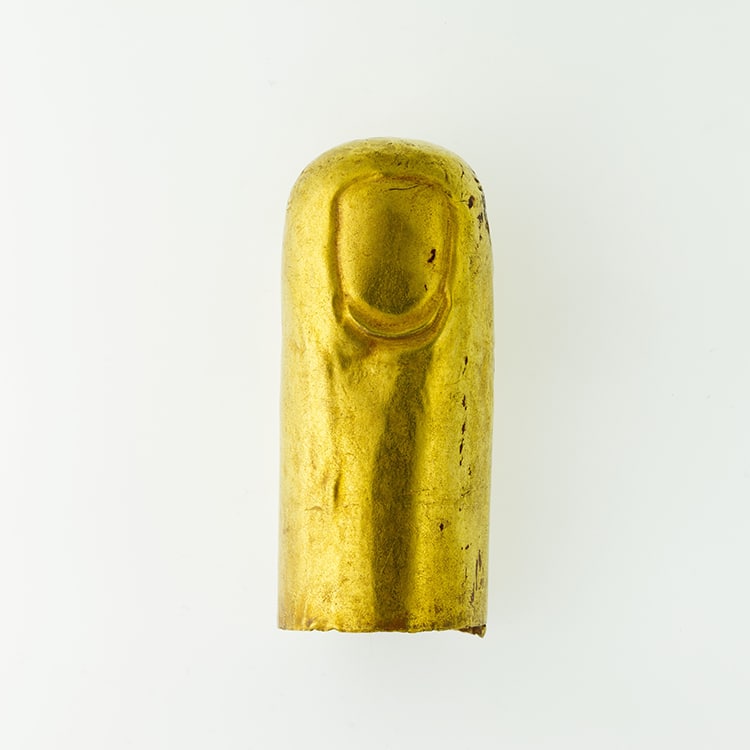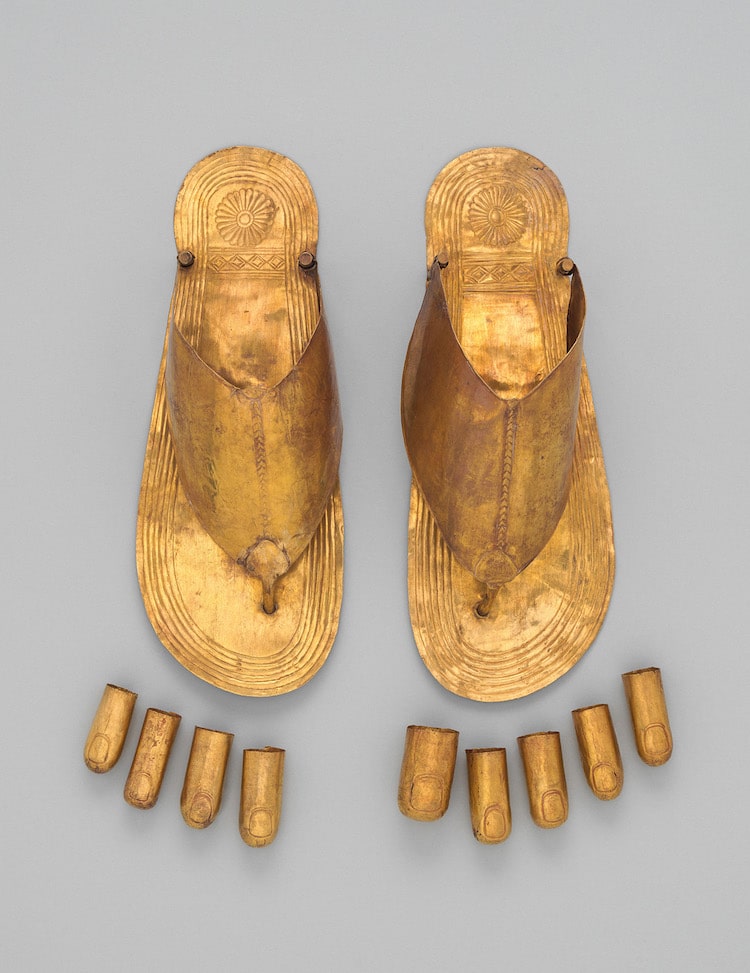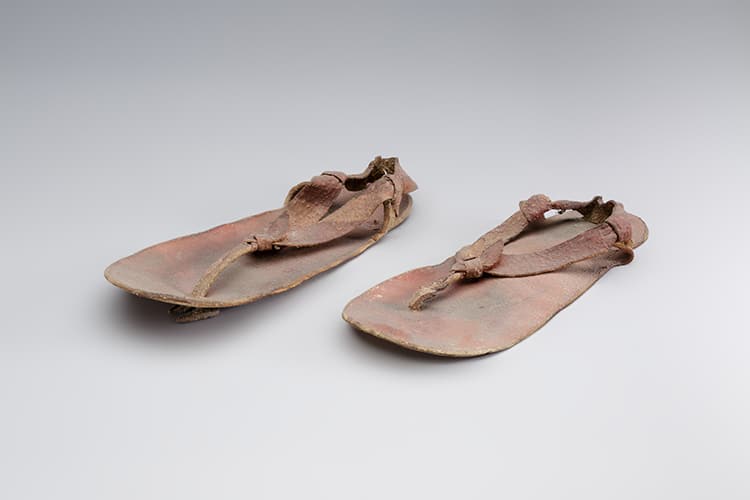
Sandals, gold sheet, New Kingdom, circa 1479–1425 BCE. (Photo: The Metropolitan Museum of Art, Public domain)
The ancient Egyptians are known for their rich and ritualistic burials. Whether a pharaoh in the Valley of the Kings or a bureaucrat in a modest rock cut tomb, the items left in a grave were intended to facilitate the transition to the afterlife. Among these items were sandals—necessary for both the living and the dead. These funerary sandals could be similar to those work in life—made of leather typically, or even papyrus. However, the most magnificent sandals—buried with royals—were often crafted in shimmering gold.
These golden sandals can be viewed in museums today. Some of the most famous pairs of shimmery shoes come from the tombs of the queens of Thutmose III. This 18th-dynasty ruler buried his wives in sandals of sheet gold, engraved and embossed to mimic the design of luxury leather pieces. Gold is a soft metal, and not suited to everyday use as shoes. However, these ordinary concerns fade away as one enters the afterlife.
Among royal burials, these rich golden sandals were often occupied by small golden “caps” for the fingers and toes. These are called finger and toe stalls. They protected the extremities of the mummy in burial. According to ancient Egyptian beliefs, the dead were supposed to be entombed as complete bodies—sometimes including prosthetic limbs. Non-royal mummies also were buried with stalls of lesser metals and even clay. Today, most stalls date to the 18th dynasty of the New Kingdom. From about 1550 to 1290 BCE, this period includes the famous boy king Tutankhamen.
If average people used average finger and toe stalls, what sort of sandals were they buried with? Braided papyrus and leather were common materials. A sturdy sole was attached to the foot by straps much like modern sandals. Sandal makers specialized in crafting these items for the living and the dead. Among the many paintings of everyday life included along tomb walls, these ancient cobblers make appearances. Today, most extant sandals are funerary in nature, preserved underground in tombs. While many of the examples below date to the 18th dynasty, the sandals and use of stalls continued well into the period of Roman Egypt.
The ancient Egyptians were often buried with sandals and toe caps called stalls.

A gold toe stall, New Kingdom, circa 1479–1425 BCE. (Photo: The Metropolitan Museum of Art, Public domain)
For the wealthy, these could be made of gold.

Egyptian gold sandals and toe stalls, circa 1479–1425 BCE. (Photo: The Metropolitan Museum of Art)
For others, these could be leather or papyrus, much like the sandals of the living.

Leather child’s sandals, New Kingdom, circa 1479–1458 BCE. (Photo: The Metropolitan Museum of Art, Public domain)

Pair of sandals from the Burial of Amenhotep, New Kingdom, ca. 1479–1458 BCE. (Photo: The Metropolitan Museum of Art, Public domain)
Preserved in tombs, these funerary sandals allow us to “walk” in the shoes of the ancients.

Sandal Maker, Tomb of Rekhmire, New Kingdom, circa 1504–1425 BCE. (Photo: The Metropolitan Museum of Art, Public domain)
Related Articles:
3,400-Year-Old Ancient Egyptian Painting Palette Still Contains Remnants of Pigments
This Virtual Tour Takes You Inside an Ancient Egyptian Pharaoh’s Tomb
4,000-Year-Old Ancient Egyptian Writing Board Shows Student’s Spelling Mistakes
